Tech File: Fire Boom for the US' Worst Oil Spill

On April 20, 2010, the Deepwater Horizon mobile offshore drilling platform was destroyed as a result of a catastrophic blowout of the Macondo 252 well in the Gulf of Mexico. The blowout resulted in a continuous discharge of approximately 3.19 million barrels of oil over three months covering approximately 30,000 square miles of the Gulf. It was the worst accidental oil spill in U.S. history. Due to the massive amount of oil being spewed into the Gulf, three aggressive oil removal methods were authorized: mechanical skimming, dispersant application and controlled burns.
New Deep-Sea Vents, Volcanic Activity Found in Mariana Back-Arc
Schmidt Ocean Institute’s research vessel Falkor returns from the first ever expedition to systematically characterize the rarely explored Mariana Back-Arc. HAGANTA, GUAM – A diverse team of scientists are returning from a 28-day expedition onboard R/V Falkor that has more than doubled the number of known hydrothermal vent sites in the Mariana Back-arc region. This area, west of the Mariana Trench, is where plate spreading and submarine volcanism are concentrated. Several momentous findings were made, including the discovery of one of the deepest vents ever found. Another important outcome was the discovery of an extremely rare recently-erupted underwater lava field that is likely only a few months old.
World Magnetic Model Updated
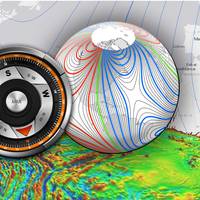
NOAA officials announced today the World Magnetic Model (WMM), a representation of Earth’s large-scale magnetic field and an indispensable complement to GPS devices used by NATO, the United States and United Kingdom militaries, as well as civil applications ranging from mineral exploration to smartphone apps, has been updated. Changes in the Earth's outer core trigger unpredictable changes in its magnetic field, an invisible force that extends from Earth's interior to where it meets a stream of charged particles emanating from the Sun.
Cruise Ship Data to Assist Ocean Scientists
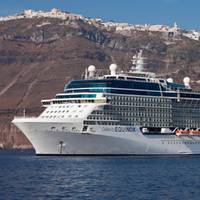
Celebrity Equinox becomes third Royal Caribbean Cruises Ltd. Last week, as Celebrity Cruises’ Celebrity Equinox completed its scheduled drydock in Cadiz, Spain, it joined Royal Caribbean International’s Allure of the Seas and Explorer of the Seas in a program that tracks ocean circulation dynamics and measures atmospheric and oceanographic conditions, on repeated journeys. According to Royal Caribbean Cruises Ltd., its ships are known for providing vacationers with innovative experiences, extraordinary service and award-winning cuisine as they cross the world’s oceans.
Three NOAA scientists honored by White House
The White House yesterday awarded three NOAA scientists with Presidential Early Career Awards for Scientists and Engineers. The award is the highest honor given by the federal government to outstanding scientists and engineers in the early stages of their careers. Laboratory. The NOAA scientists are part of a group of 102 scientists from across federal agencies that received the prestigious award. “NOAA is home to some of the world’s leading scientific research and our scientists strive each day to tackle some of the biggest challenges facing our planet,” said NOAA Administrator Kathryn Sullivan, Ph.D. “Through their research on improving sustainable fisheries management…
University of Mich. To Host Panel on Low Great Lakes Levels
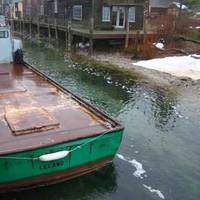
The University of Michigan will host a seminar and panel discussion entitled “Low Great Lakes Water Levels: Understanding the causes and potential consequences” on May 30 from 3-5 p.m. at the University of Michigan in Ann Arbor. The two-hour seminar and panel discussion will address the drivers of decreased lake levels as well as the management and potential economic implications. North America's Great Lakes hold the largest amount of available surface freshwater in the world, comprising approximately 21% of the world’s total freshwater supply.
NOAA Releases Study on Deepwater Horizon Controlled Burns
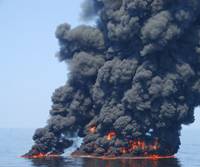
During the 2010 BP/Deepwater Horizon Gulf oil spill, an estimated one of every 20 barrels of spilled oil was deliberately burned off to reduce the size of surface oil slicks and minimize impacts of oil on sensitive shoreline ecosystems and marine life. In response to the spill, NOAA quickly redirected its WP-3D research aircraft to survey the atmosphere above the spill site in June. During a flight through one of the black plumes, scientists used sophisticated instrumentation on board, including NOAA's single-particle soot photometer, to characterize individual black carbon particles.
NOAA: Air Pollution Plummets when Ships Shift Fuels
New clean fuel regulations in California and voluntary slowdowns by shipping companies substantially reduce air pollution caused by near-shore ships, according to a new NOAA-led study published online today in Environmental Science & Technology. The study examined a container ship operating under a 2009 California regulation requiring that ships switch to low-sulfur fuels as they approach the California coast, and also adhering to a voluntary state slowdown policy, intended to reduce pollution. The research team found that emissions of several health-damaging pollutants, including sulfur dioxide and particulate matter, dropped by as much as 90 percent.
WHOI Joins NOAA in "Battle of the Atlantic"
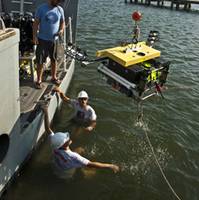
It’s been called everything from the Graveyard of the Atlantic to Torpedo Junction. By whatever name, the seas off the coast of North Carolina during World War II were the site of a devastating period for the United States, during which dozens of ships—mostly merchant vessels—were sunk by German U-Boats. Today, the remains of those ships, along with several U-Boats, rest at the bottom of the Atlantic. The National Oceanic and Atmospheric Administration (NOAA) estimates that from January to August 1942, more than 50 vessels were lost to the U-Boat assault.
NOAA Takes First Broad Look at Soot from Ships
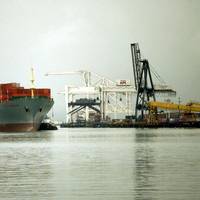
Tugboats puff out more soot for the amount of fuel used than other commercial vessels, and large cargo ships emit more than twice as much soot as previously estimated, according to the first extensive study of commercial vessel soot emissions. Scientists from NOAA and the conducted the study and present their findings in the July 11 issue of the journal Geophysical Research Letters. The primary sources of soot, or small particles of black carbon, are fossil fuel combustion, wildfires, and burning vegetation for agricultural purposes.









